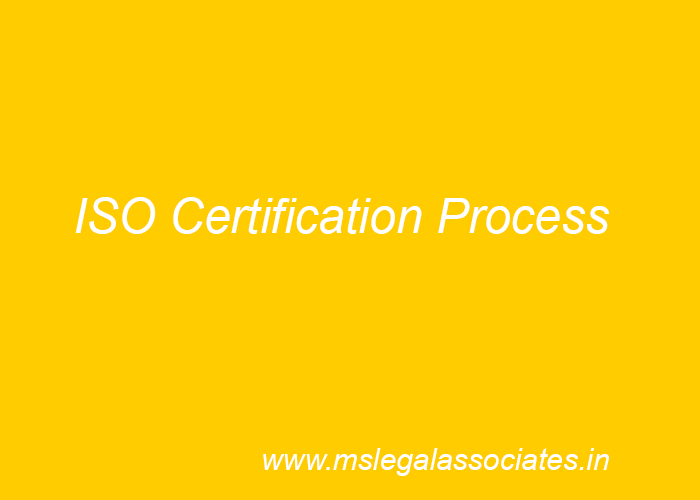Latest Blogs
ISO Certification Process in Bidadi
By Advocate Sanjana

Steps for ISO Certification in Bidadi.
Quick guide for achieving ISO 9001 certification
What Are the Steps of the ISO Registration Process?
1. Finding an ISO 9001 Registrar
2. Selecting an ISO Registrar
3. Creating an ISO Application
4. Conducting a Quality Document Review
5. Determining Preassessment Need
6. Issuing an ISO Assessment
7. Completing ISO 9001 Registration
8. Checking with Surveillance Audits
Your organisation should have a clear idea of your objectives and what benefits it will gain by achieving ISO 9001 Certification. You have to be prepared to incorporate the Quality Management Systems into every area of the business.
All staff must be aware of what is expected of them and where their areas of responsibility lie, in order to achieve ISO 9001 Certification.
A Documented Quality Management System is required, together with the policies and procedures required by ISO 9001.
The documentation will define:
Organisation structure
Who should record information and what information is recorded
Responsibilities of employees
Lines of communication throughout the company
What actions are required
How continuity will be maintained as staff change
System definition
Defining your Quality Management System will require input from all of the departments in the organisation.
You will need to:
Define who your customers are for each department, for example:
- For the sales and marketing department it will be the end users.
- For the IT department it will be internal departments.
Document the activities in each area.
Review the ISO 9001 Standard to ensure the requirements have been met.
Identify any problem areas and rectify them
Management of Documentation
You will need to communicate to all of your staff, the importance of keeping records and using the correct documentation.
Controlling the use of documents to ensure the latest version is being used is an important part of ISO 9001. You will need a robust system to ensure that old versions are removed and new versions distributed to the various internal departments, together with a system for version control.
You will need to identify which records are to be kept to comply with the requirements of your ISO 9001 system and what you need to successfully run the business.
Corrective and preventive measures
Inevitably, processes can go wrong and you will need to have a defined process for fixing the problem and identifying where it went wrong, before making changes to prevent it from happening again.
You should keep a record of any actions you have taken to rectify a problem. Where possible you should identify potential problem areas and set up a system to prevent or minimise their effect before it happens.
On-going support and training
Staff should be suitably trained to ensure they are capable of carrying out their job function. You must keep records of past experience, education and training to identify their capabilities.
Future training requirements can then be implemented together with any new skills that may be needed as the business evolves.
Using this information you will be able to identify any gaps in experience if you install new equipment or add new products.
Regular Internal Quality Auditing
Regular Internal Quality Auditing of your own system is required. Persons within your organisation who are independent of the function being audited may carry these out.
The Internal Auditor will check that procedures in the Quality Manual are being followed and will identify any areas of concern to be rectified.
You must have a procedure for how audits are to be planned, conducted and recorded.
ACS Registrars Ltd are a UKAS Accredited Certification Body.
Talk to us to find out how we can help you understand the requirements for achieving ISO 9001 Accredited Certification.
